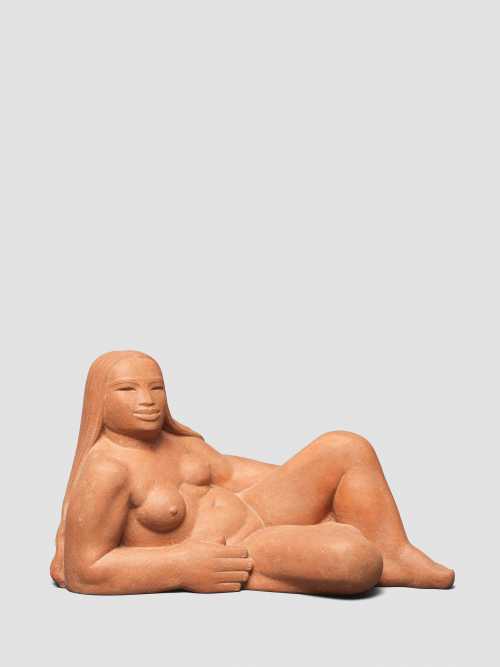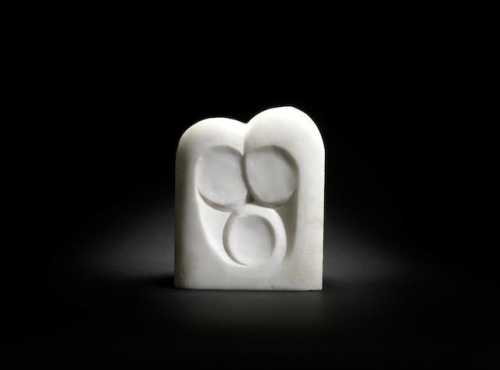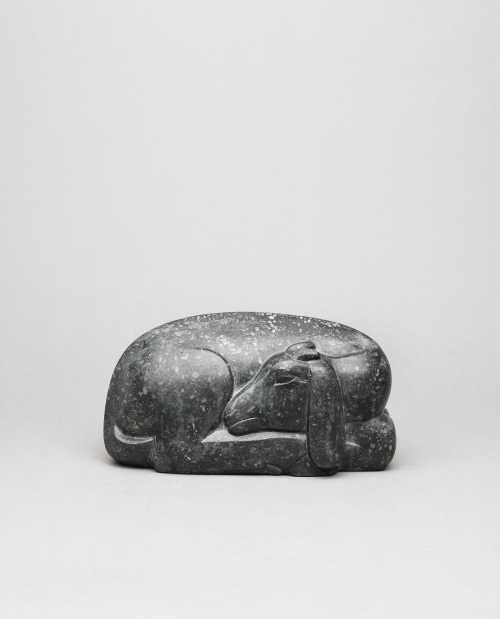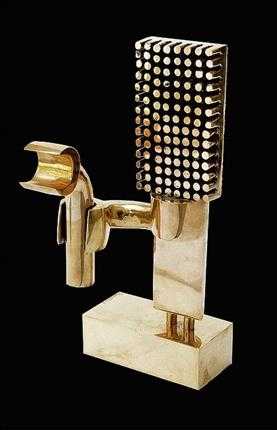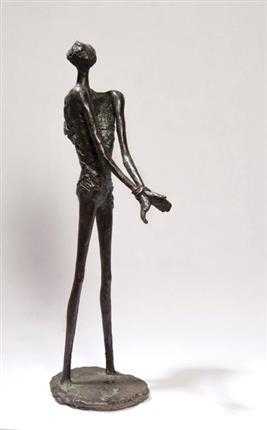- Reclining Nude 1953
- terracotta
- Sculpture
- 50 cm
Estimation
£14,000
19,569 USD
-
£20,000
27,956 USD
Realized Price
£22,750
31,800 USD
33.824%
Artwork Description
"The nakedness of woman is the work of God"
- William Blake
Sensual, voluptuous, and expressive, the present sculpture is one of Mahmoud Moussa's most instantly recognisable and representative compositions, and most notably won the first prize in the inaugural Alexandria Biennale in 1954.
The reclining female nude was a popular subject in classical painting and sculpture. The odalisque – originally meaning a slave in a Turkish harem – was often placed in an exotic setting, with suggestions of sexual submissiveness. In the twentieth century, artists were able to present sexuality more frankly, without the orientalist trappings of their predecessors. At the same time, their depiction of sensual attraction was complicated by Freud's uncovering of repressed subconscious drives with which modern artists, in particular, were fascinated.
In this composition, Moussa invites comparison with the grand tradition of the nude as exemplified by Giorgione, Titian, Diego Velazquez, Francisco Goya or Édouard Manet. It is perhaps with the frank come-hither sexuality of Goya's Naked Maja, with its discreet balance between naturalism and elegance, that comparison can best be made in this case.
Mahmoud Mousa is generally regarded as the artistic successor to the great Mahmoud Mokhtar. He was a pioneering artist of the second generation, beginning his artistic career when, in 1931, he joined evening classes run by the Amateurs Society, then under the direction of Mahmoud Said, and received further training from Mahmoud Mokhtar, which contributed to the development of the signature Pharaonic revival style which is the hallmark of some of the most celebrated examples of twentieth century Egyptian sculpture.
Moussa's artistic skill and aesthetic sensibilities came from his experience with sculpting marble gravestones, demonstrated in his ability to work on a shallow surface, and his deftness in imbuing his figures with a unique expressiveness, grace and austerity evident in the president composition.
He became a member of the teaching staff at the sculpture department of the Faculty of Fine Arts in Alexandria, in 1957. He participated in several group exhibitions in Cairo and Alexandria including several appearances at the Alexandria Biennale, including winning the prize for sculpture in Alexandria Biennale in 1955.
- William Blake
Sensual, voluptuous, and expressive, the present sculpture is one of Mahmoud Moussa's most instantly recognisable and representative compositions, and most notably won the first prize in the inaugural Alexandria Biennale in 1954.
The reclining female nude was a popular subject in classical painting and sculpture. The odalisque – originally meaning a slave in a Turkish harem – was often placed in an exotic setting, with suggestions of sexual submissiveness. In the twentieth century, artists were able to present sexuality more frankly, without the orientalist trappings of their predecessors. At the same time, their depiction of sensual attraction was complicated by Freud's uncovering of repressed subconscious drives with which modern artists, in particular, were fascinated.
In this composition, Moussa invites comparison with the grand tradition of the nude as exemplified by Giorgione, Titian, Diego Velazquez, Francisco Goya or Édouard Manet. It is perhaps with the frank come-hither sexuality of Goya's Naked Maja, with its discreet balance between naturalism and elegance, that comparison can best be made in this case.
Mahmoud Mousa is generally regarded as the artistic successor to the great Mahmoud Mokhtar. He was a pioneering artist of the second generation, beginning his artistic career when, in 1931, he joined evening classes run by the Amateurs Society, then under the direction of Mahmoud Said, and received further training from Mahmoud Mokhtar, which contributed to the development of the signature Pharaonic revival style which is the hallmark of some of the most celebrated examples of twentieth century Egyptian sculpture.
Moussa's artistic skill and aesthetic sensibilities came from his experience with sculpting marble gravestones, demonstrated in his ability to work on a shallow surface, and his deftness in imbuing his figures with a unique expressiveness, grace and austerity evident in the president composition.
He became a member of the teaching staff at the sculpture department of the Faculty of Fine Arts in Alexandria, in 1957. He participated in several group exhibitions in Cairo and Alexandria including several appearances at the Alexandria Biennale, including winning the prize for sculpture in Alexandria Biennale in 1955.
More lots by Mahmoud Moussa
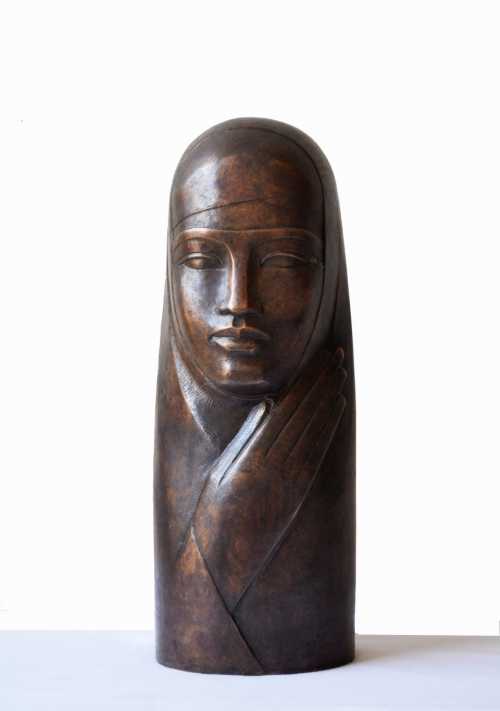
Bint Bahary
Estimation
£6,000
8,344 USD
-
£10,000
13,906 USD
Sale Date
Bonhams
-
12 August 2021
Realized Price
18,300 USD
Min Estimate
11,891 USD
Max Estimate
17,561 USD
Average Artwork Worth
+34.058%
Average Growth of Artwork Worth
Sales Performance Against Estimates
Average & Median Sold Lot Value
2019 - 2023
Performance vs. Estimate
2019 - 2023
Sell-through Rate
2019 - 2023
Similar Artworks
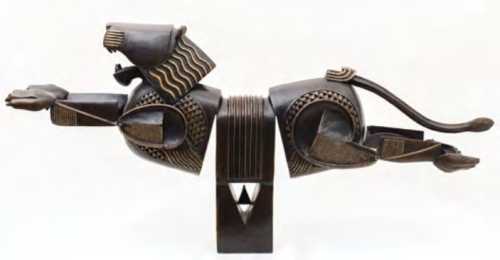
Untitled from the Lions on the Flag series
Estimation
10,000,000,000﷼
20,000 USD
-
15,000,000,000﷼
30,000 USD
Realized Price
13,000,000,000﷼
26,000 USD
4%
Sale Date
Tehran
-
18 July 2023
